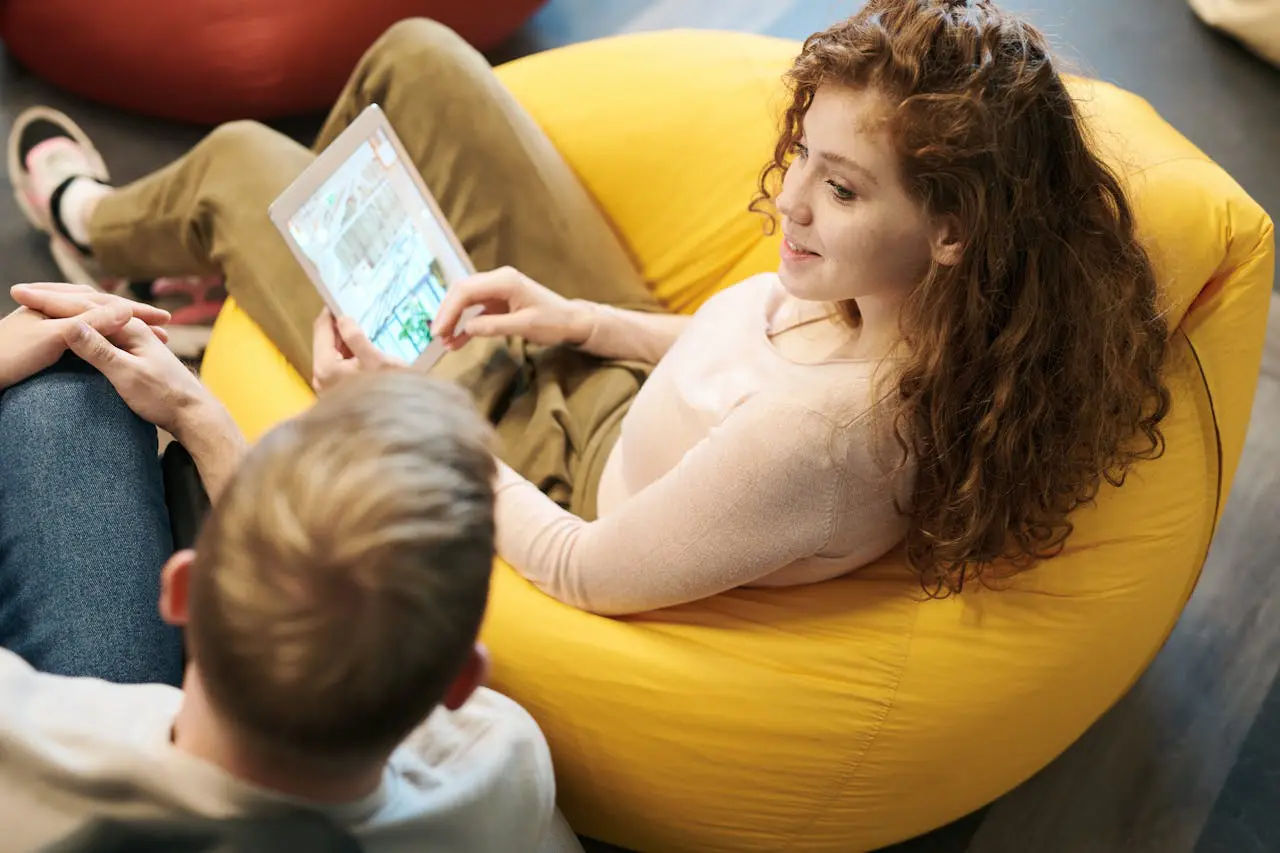Think about the last time a stranger instantly put you at ease – a barista who remembered your order, a teammate who asked the exact follow-up you needed, a speaker who made a crowded room feel like a one-on-one. That pull you felt wasn’t luck. It was the quiet force of mental attractiveness – the kind that goes beyond looks.
Psychologists call it a blend of empathy, curiosity, and responsiveness. If you’ve ever wondered what makes someone mentally attractive, or how to be attractive mentally, it usually comes down to small, intentional behaviors that make others feel valued.
Most of us aren’t drawn to people because of a perfect jawline; we’re drawn to people who show up in ways that help us feel understood and respected. The best part? Those cues are teachable. With a few repeatable habits, anyone can become the person others remember – and return to.
Here’s how I’ve seen that play out, time and again.
ID 155752703 ©Fizkes | Dreamstime.com
I have over two decades in communication and PR (plus studies) – coaching executives, training teams, and speaking on stages. I am also a business coach (have been for a few years now). Across industries and audiences, one pattern never fails: people lean toward those who make them feel seen, safe, and stimulated. The good news? That’s a set of learnable habits.
Some people seem to have it – that effortless charisma that draws attention the moment they walk in. They speak and others lean in, not just because of what they say, but how they make people feel. And yes, a portion of that comes naturally: their energy, timing, or tone might give them an early advantage.
But the truth I’ve seen over and over again is that everyone has something special – a quality, story, or way of connecting that can stand out when it’s expressed with intention. Charisma isn’t reserved for the few; it’s amplified through practice. There are behaviors we can all learn, cultivate, and refine to become more mentally attractive – so that when we speak, our ideas land, our voices are heard, and our presence leaves a lasting impression.
Decades of behavioral science back this up: the psychology behind attraction isn’t only about confidence or charm – it’s about repeatable patterns of behavior. In fact, habits that make you more attractive mentally tend to overlap with habits that improve trust, communication, and collaboration.
21 Science-Backed Habits That Instantly Make You More Attractive (Mentally, Not Just Physically)
1) Active listening (the habit that changes a room)
We all love it when we feel we are heard, understood, and listened to. But we can also become the person who listens, hears, and understands others. And that is powerful!
When I coach speakers, the “secret weapon” isn’t a perfectly crafted answer – it’s the quality of listening before the answer. Experiments show that active listening (brief eye contact, paraphrasing, relevant follow-up questions) increases perceived understanding and social attractiveness in first-time conversations.
A well-cited study shows the power of listening, and there’s earlier lab work on paraphrasing that tracks with what I’ve seen in client debriefs. (I can’t count how many heated meetings defused once someone paraphrased the emotion and the ask.)
A tip (I use this too): After someone finishes, I say, “So the concern is X because Y – is that right?” Then I ask one focused follow-up (see #2).
Practicing active listening is one of the simplest ways to connect better with people – whether it’s a teammate, partner, or friend. Research consistently shows that learning how to be a better listener in relationships increases empathy, reduces misunderstandings, and even boosts perceived intelligence.
2) Ask more follow-up questions
In my media-training sessions, the people who build trust fastest aren’t the ones with the smartest monologue – they’re the ones who ask responsive follow-ups.
And the follow-up questions are also vital in coaching.
Harvard research shows that people who ask more questions – especially follow-ups tied to what the other person just said – are liked more and get better outcomes in social exchanges (even dating). Here’s the original paper PDF and a summary page.
How I teach it: Use a 1–2 rhythm – one question → two follow-ups starting with how/what/why. Then reflect one key point.
3) Be visibly kind and prosocial
I’ve watched kindness change reputations faster than any press release. Newer research goes further: prosocial behavior makes people look more physically attractive, not just “nicer.” Ten studies (N = 4,192) found that people described as generous/helpful were judged more beautiful.
Kindness, empathy, and generosity are among the most powerful non-physical traits that make you attractive. These prosocial behaviors top nearly every “habits that make you more likable” study across cultures.
What you can do: Make micro-kindnesses visible but natural – credit teammates, connect two people who should know each other, hold the door (literally and metaphorically).
4) Use warm humor (not put-downs)
ID 65748701 | Listening ©Rawpixelimages | Dreamstime.com
On stage, I often open with a light, human moment – not a zinger. And I teach this when I work with clients.
The evidence matches what I see: affiliative/positive humor tends to increase attraction more reliably than aggressive or sarcastic humor. A 2016 paper outlines this pattern, and KU research highlights that shared laughter is an especially strong signal of connection.
Humor doesn’t just make people laugh—it shapes the psychology of being likable. Shared laughter builds connection, lowers defenses, and signals emotional intelligence, which research repeatedly links to attraction.
My rule: If the laugh costs someone in the room, skip it. Warm > clever. Yes, I am always thinking from multiple perspectives, trying to anticipate if someone can be hurt – you should do this too (and not only with humor, but with any observation)!
5) Say “thank you” like you mean it
Gratitude is the relationship equivalent of compound interest. In couples research, expressed gratitude predicts higher commitment and better day-to-day climate. (In teams, I’ve seen it transform tense projects.) Start with Algoe et al. on everyday gratitude, then see Gordon et al. on relationship maintenance.
How I do it: Specific beats generic- “Thanks for flipping the deck overnight; the visual flow saved the pitch.”
6) Keep phones off the table (end “phubbing”)
A 2025 meta-analysis found partner phone-snubbing (“phubbing”) correlates with lower relationship satisfaction and intimacy. Newer studies with young adults point the same way. Practical takeaway: agree on micro tech-boundaries during 1-to-1s or dates.
What I do: ever since I married my husband (20 years ago) we established a rule. If we call and the other one does not reply, we know they are in a meeting/cannot talk and will call back. IF it is an EMERGENCY – we call back immediately and the partner knows they HAVE to reply. I had to call once like that my husband – he replied – and we solved that situation. But make sure the emergency really is an emergency!
Otherwise, NO calls in presentations/meetings!
7) Eye contact: helpful – but not a magic trick
Public-speaking myth: “More eye contact = more persuasion.” Not always. Like I always say: do you know who does NOT take their eyes off of you? A predator! Even in the wild – or even at home: did you see a cat hunting?
One paper shows direct gaze can promote belief when statements are ambiguous; other research finds more direct gaze can increase resistance to persuasion – especially when people already disagree. I’ve seen this in Q&As: hard stare = defensiveness. Use balanced, culturally aware eye contact.
Personal heuristic: 60/40 – brief, regular eye contact while listening; glance away to think. Flex for culture and neurodiversity. But do not force this or time this. Make it natural.
8) Open, expansive posture (without overpowering)
In speed-dating and app simulations, postural expansiveness – open, relaxed posture – predicted more “yes” responses. I coach speakers to claim space without looming. Shoulders down, chest open, arms uncrossed; it reads as warm + confident rather than closed or defensive.
Back-of-room tip: Clip your phone and bottle out of your hands; empty hands keep posture open.
9) Apologize well when you slip
When I media-train execs, we rehearse non-defensive apologies: acknowledge impact, take responsibility, offer repair. Multi-study work shows apologies promote forgiveness and repair, but quality matters. You can hear the difference between “I’m sorry if you felt…” and “I interrupted you – that was disrespectful.”
Template you can use: “I’m sorry for [behavior]. It impacted you by [impact]. Here’s what I’ll do differently next time – does that work?”
10) Practice intellectual humility
The leaders I trust most say “Here’s my view – what am I missing?” Reviews synthesize evidence that intellectual humility (recognizing limits, staying open) links to better learning and more constructive social behavior. In practice, it reads as confidence without arrogance – a very attractive blend.
Studies in social psychology reveal a fascinating link between intellectual humility and attraction – people who admit what they don’t know and stay curious tend to come across as more open-minded, confident, and grounded.
In meetings: “Flag what I’m not seeing; I’d rather be accurate than right.”
11) Signal real curiosity
Curious people are easier to be around – they ask, explore, and tolerate ambiguity. Recent work connects trait curiosity to adaptive cognitive and social outcomes across adulthood. (A newer PLoS ONE paper even links curiosity to markers of cognitive reserve.) In my workshops, curiosity consistently lowers defensiveness in tough conversations.
It’s no surprise that curiosity makes you more attractive. When you ask thoughtful questions and genuinely want to learn from others, you create psychological safety and show flexibility, two traits strongly associated with long-term likability.
Low-stakes prompt I use: “What surprised you most about X?” It invites story, not a quiz.
12) Have stories that transport you (nuanced evidence)
I’m a fan of using narrative to practice perspective-taking. Studies suggest that being emotionally transported into fiction can boost empathy over time, though single-session effects and some replications are mixed. The balanced takeaway: pick character-driven stories you actually lose yourself in.
Habit: 20 minutes of literary fiction before bed; it also helps me switch off from screens.
Yes, for me, including stories from personal experience comes naturally. You can get there too with a little bit of practice.
13) Mindfulness – use it to regulate your reactivity
I don’t sell mindfulness as a cure-all. But systematic reviews and meta-analyses indicate mindfulness/meditation programs produce small-to-moderate improvements in stress, and there’s evidence for gains in empathy/self-compassion with a sufficient dose. In tough conversations, that extra beat before reacting is worth gold.
Caution: Don’t bypass real issues with “just breathe.” Pair mindfulness with boundaries and problem-solving.
14) Share credit – privately and publicly (with consent)
We all (or almost all) want our work to be recognized. Gratitude doesn’t only belong in DMs. Public appreciation – done thoughtfully – signals safety and communal motivation.
The relationship literature on gratitude shows it strengthens commitment and “maintenance” behaviors over time. (In comms teams under deadline, I’ve seen this reduce churn.)
A useful practice: “Shout-out to Ana for finding the audience hook” – but always check first if the person is comfortable with a public mention.
15) Be reliable (self-control scales as trust)
In a couple of data sets, more total self-control in the dyad is associated with higher satisfaction and smoother conflict. In teams, reliable follow-through becomes a reputational asset that outperforms charisma.
Consistency, follow-through, and reliability are underrated habits that make you more likable at work. Teams prefer people who do what they promise. and over time, that reliability reads as competence and integrity.
What I model: Under-promise, over-deliver; communicate early if a deadline shifts.
16) Be specific (ambiguity erodes likability)
In PR, I always fight vague quotes at all costs (I know vague responses are what PR is associated with). Experiments show that ambiguous answers make people less likable than clear, specific ones (with sensible exceptions for sensitive questions). You can feel this at a podium: specifics calm a room.
Swap: “Let’s do lunch sometime” to “Are you free Tue 12:30 near the office?”
17) Calibrate your disclosure (the Fast Friends idea)
Structured, reciprocal self-disclosure – famously operationalized in Aron et al.’s “36 Questions” procedure – can accelerate feelings of closeness when used ethically and consensually. In the original experiment, strangers who took turns answering increasingly personal questions (rather than engaging in small talk) reported significantly greater closeness afterward.
Stafforini
I adapt this technique in team off-sites and workshops using lighter, context-appropriate prompts. The trick is reciprocity and pacing: both parties share, both parties listen, and both escalate gradually. Depth should always be matched to trust and context – not leveraged manipulatively.
How I frame it: “Share only what’s comfortable – no pressure.”
18) Match verbal and nonverbal signals
ID 123678675 ©Kawee Wateesatogkij | Dreamstime.com
When words say “open” but posture says “closed,” people believe the posture. The broader nonverbal literature (including dynamic cues like gesture and gait) aligns with what I see in media training: congruence matters more than theatricality.
If you feel tense, your body broadcasts it; better to acknowledge and breathe than to over-perform.
Practice I teach: Say “That’s a fair question – give me a second” while you visibly inhale/exhale and square your stance.
19) Use warmth + competence (balanced signal)
In audience feedback, “so approachable” without a “clear plan” doesn’t get rehired. Social-perception research shows we prefer a balance of warmth and competence. In practice, that means empathy plus a crisp next step.
Beyond performance, a growth mindset in relationships makes people more patient and adaptable. New research even discusses a “beauty growth mindset” – the idea that seeing attractiveness as developable, not fixed, promotes empathy and generosity.
On stage: Validate first (“You’re right to be worried about X”), then offer a small concrete action (“Here’s what we’ll do by Friday”).
20) Build a growth mindset (for people, not just skills)
Mindsets aren’t just for school. Reviews show that believing abilities can develop – your own and others’ – nudges more constructive responses under pressure.
I’ve seen teams shift from blame to iteration when they adopt this lens. (There’s also emerging work on a “beauty growth mindset” relating to prosocial behaviors.) Use it to narrate progress, not perfection.
You can use this: “We’re not there yet, and here’s the next experiment.”
21) Design small rituals (the 10-minute reset I use)
Before a conversation (60 sec): One mindful breath; intention = “I’m here to understand.” (See mindfulness evidence.)
During (5–7 min): One good question, two follow-ups; paraphrase once. (See questions + listening.)
Nonverbals (ongoing): Open posture; natural eye contact. (See posture + eye contact studies.)
Close (30 sec): Appreciate something specific they did/said. (See gratitude research.)
After (30 sec): Jot one thing you learned; send a short thank-you.
Cautions & context (from both research and the room)
Culture & neurodiversity: Eye contact, humor, and disclosure norms vary. Ask before going deep. (Eye contact can even reduce persuasion in some contexts.) You can read books on negotiation techniques in different cultures and books on body language (also adapted to different cultures).
Power dynamics: If you hold power, lean into safety cues – listening, credit-sharing, clarity.
Tech boundaries: The phubbing research is correlational – co-create norms; don’t impose.
Mindfulness limits: Useful, but not a replacement for therapy or systemic fixes. Evidence shows small-to-moderate benefits with adequate dose.
Why these habits “read” as attractive
If I boil 20+ years into one sentence, it would be: mental attractiveness is responsiveness. Follow-ups, real listening, warm humor, clear specifics, credit-sharing, and regulated reactions all send the same meta-signal – “I’m paying attention to you.” Stack a few of these this week, and people won’t just enjoy your company more; they’ll start to seek it out.
Decades of research on the science of attraction psychology confirm that responsiveness – more than looks or status – determines how magnetic we appear. These are psychology-backed ways to build attraction that anyone can apply: small, daily habits that make others feel seen, safe, and understood.
Quick disclaimer: Findings below come from psychology and social science (often correlational). Culture, context, and neurodiversity matter. Nothing here replaces medical or mental-health advice. Use what fits your values, boundaries, and setting.
I recently presented you on this site some studies with different recommendations of EASY things to do to live happily and long:
- Scientists Reveal the Unexpected Longevity Habit That Costs Nothing
- Scientists Say This Overlooked Habit Could Add Years to Your Life
- Scientists Say People With This Mindset Are Far More Likely to Reach Age 90+
- Add Decades, Not Just Years: 8 Habits That Could Add 20–25 Years to Your Life (Backed by a Massive Study)
- Build a Night Routine That Boosts Longevity – What Studies Show
- Want a Longer, Happier Life? Scientists Say This 1-Hour Habit Could Be the Key
- Want to Live Longer? Studies Say These Mental Habits May Help (No Sweat Required)
- Eat Earlier, Live Longer? What a New Study Says About Breakfast Timing, Aging, and Longevity
- Simple daily habits for a healthier mind
- How to De-Clutter Your Mind, Backed by Science
- The Personality Traits That Can Help You Live Longer (and Be Happier)
Frequently Asked Questions About Mental Attractiveness (and the Science Behind It)
Q: What makes someone mentally attractive?
A: Being mentally attractive means showing traits like empathy, curiosity, gratitude, and intellectual humility. These habits signal emotional intelligence and make people feel valued.
Q: What are science-backed habits that make you more attractive?
A: Studies show that active listening, prosocial behavior, humor, gratitude, and curiosity are all science-backed habits that make you more attractive mentally, not just physically.
Photo sources (apart from Dreamstime): 1, 2








